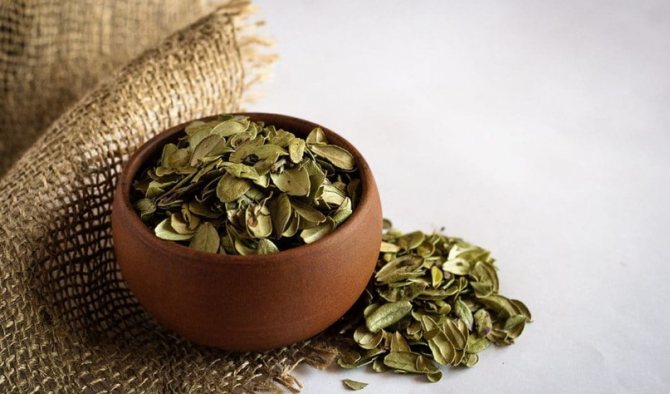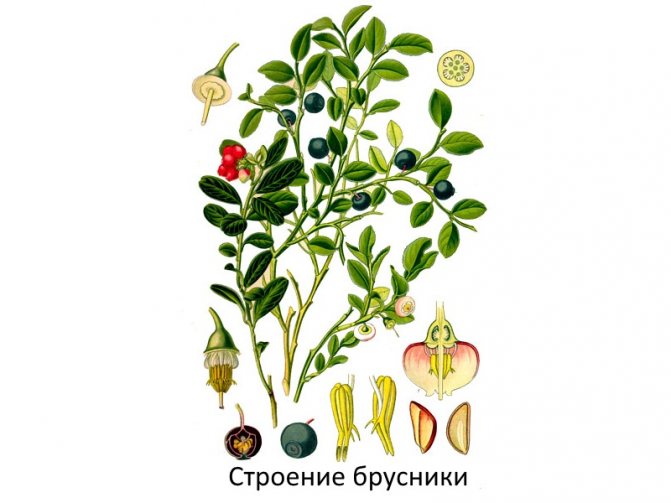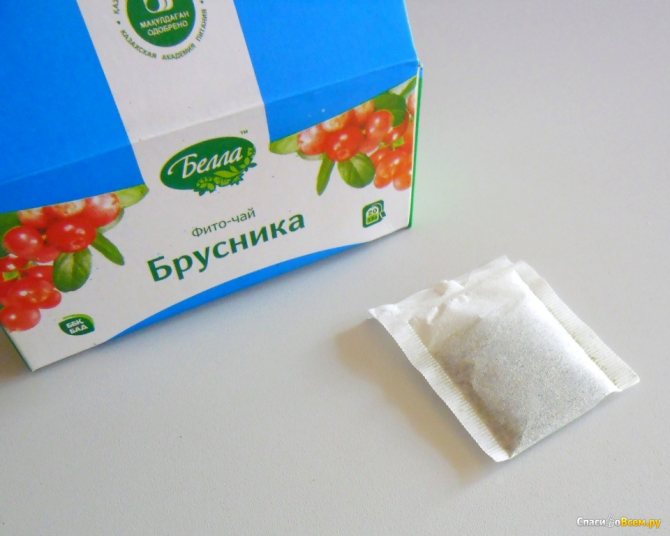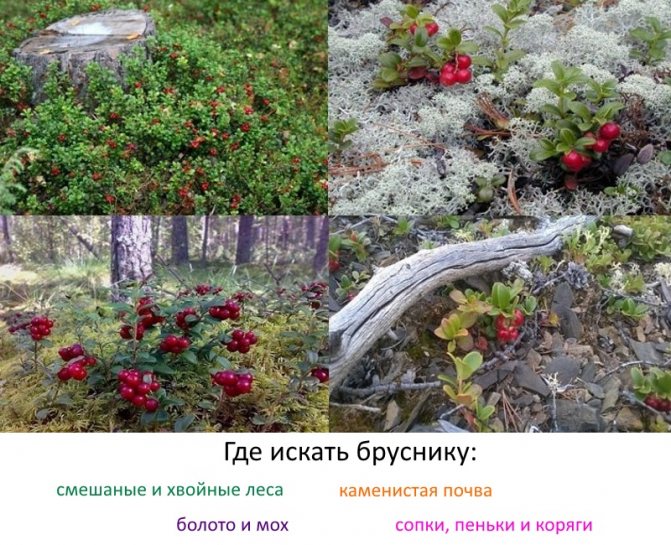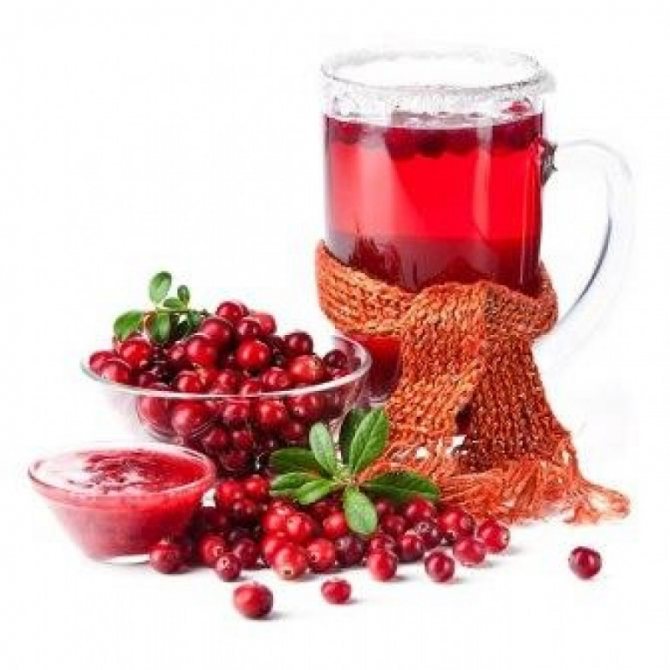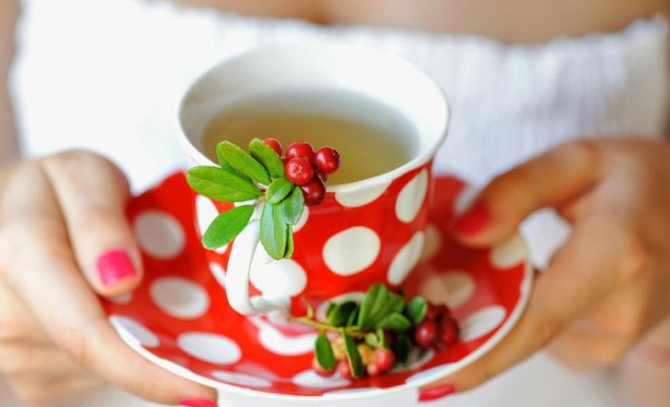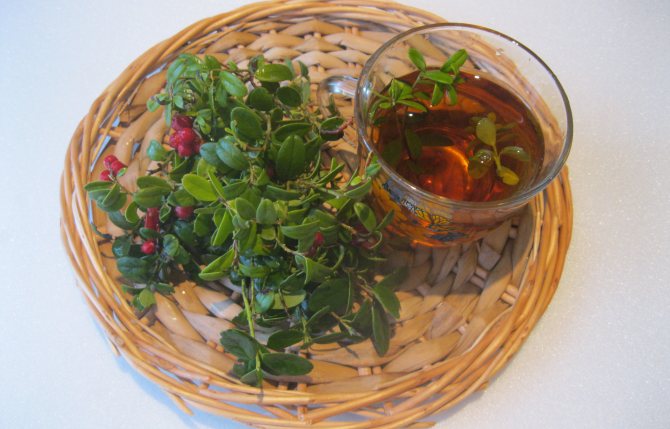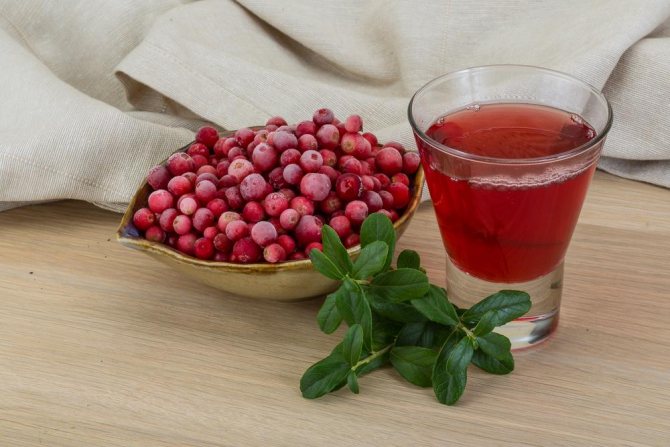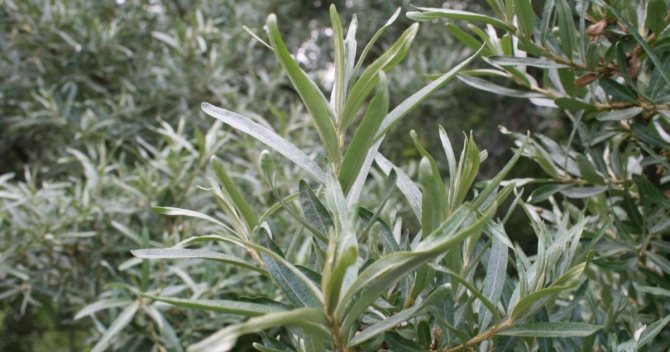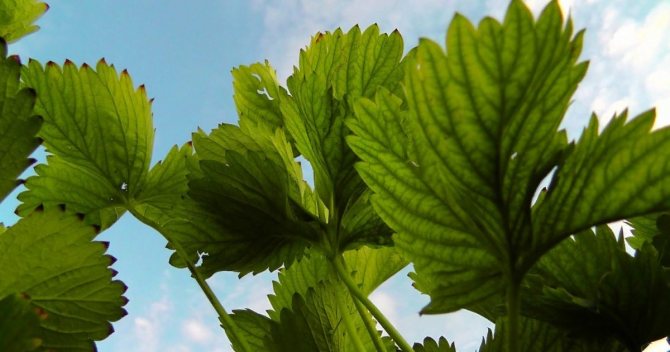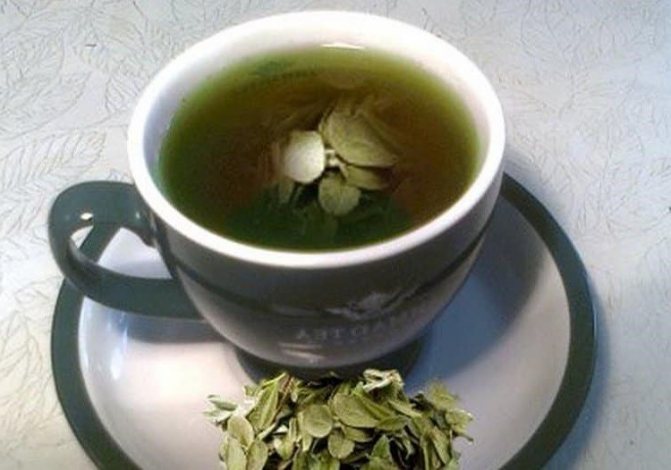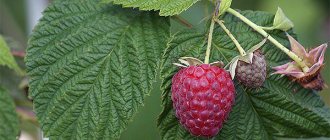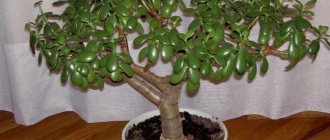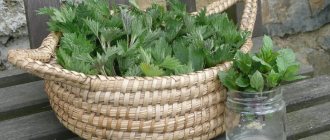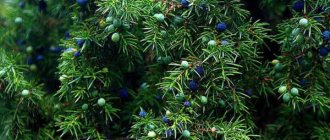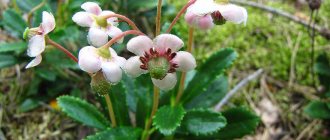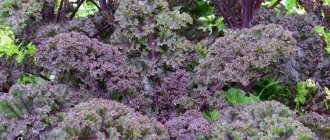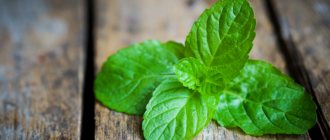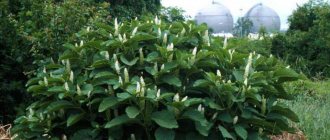Lingonberries are loved to be picked in the forest, grown in the garden or bought at the market. The berry is respected for its antiviral effect. Grandmothers feed their grandchildren with lingonberry jam so that their grandchildren do not get the flu. Lingonberry leaves contain the same vitamins as the fruit. Herbal teas are brewed from the leaves, which strengthen the immune system, quench thirst, and relieve fatigue.
Why are they useful, indications for use
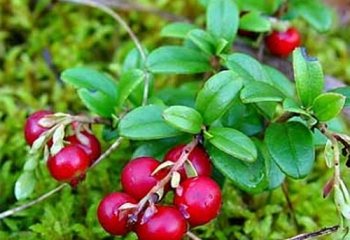
Lingonberry leaves are unique in their chemical composition. They contain a lot of natural biologically active substances that normalize body functions:
- anthocyanins, catechins - natural antioxidants, counteract aging at the cellular level, normalize metabolism;
- tannins, flavonoids - support the health of the excretory system, improve connective tissue nutrition;
- lycopene - natural anti-cancer agent;
- benzoic organic acid - a natural antiseptic, has antimicrobial and anti-inflammatory effects.
Lingonberry leaf is a real mini first aid kit for treating a large number of diseases.
| Diseases in the treatment of which lingonberry is used | What is the effect of phytopreparations based on lingonberry leaves in this disease | Mode of application |
| Avitaminosis and decreased immunity | Replenish vitamin deficiencies Strengthens the immune system | Inside in the form of tea, broth |
| Arthritis | Anti-inflammatory Remineralizing Light pain reliever | Alcohol tincture |
| Bronchopneumonia | Anti-inflammatory Antiseptic Expectorant | Inhalation |
| Low acid gastritis | Regulates acid production in the stomach Disinfectant | Inside |
| Herpes simple | Immunostimulating Antiviral Wound healing | Inside in the form of tea, external lotions |
| Hypertension | Reduce blood pressure slightly | Leaf juice |
| Migraine | Anti-inflammatory Light pain reliever | Leaf juice |
| Urolithiasis disease | Diuretic Antiseptic Wound healing | Decoction |
| Oncological diseases | Prevents the appearance of neoplasms Slows down the growth of existing tumors | Fresh juice, broth, tincture |
| Edema | Diuretic | Infusion |
| Pyelonephritis | Diuretic Anti-inflammatory | Decoction |
| Gout | Diuretic Pain reliever Remineralizing | Alcohol tincture |
| Prostatitis | Anti-inflammatory | Decoction |
| Diabetes | Refers to foods that reduce sugar | Broth or infusion |
| Staphylococcal infections of the skin and mucous membranes | Stimulates phagocytosis Destroy and inhibit staphylococcal colonies | Gargles, lotions, compresses |
| Stomatitis | Anti-inflammatory Disinfectant | Rinses |
| Cystitis | Diuretic Anti-inflammatory | Decoction |
| Nocturnal enuresis | Reduce the manifestations of bedwetting | Broth with St. John's wort |
Lingonberry leaf properties
Lingonberry leaf contains:
- B vitamins, vitamin C, vitamin A;
- Iron, zinc, magnesium, phosphorus, manganese;
- 25% of the composition is tannic acid;
- Citric and malic acids;
- Phytoncides;
- Tannin.
In addition, the leaf contains vegetable protein that strengthens the weakened body. In just 100 grams of lingonberry leaf: 7 grams of carbohydrates, 0.02 grams of protein and fat. Energy value - 26 kcal.
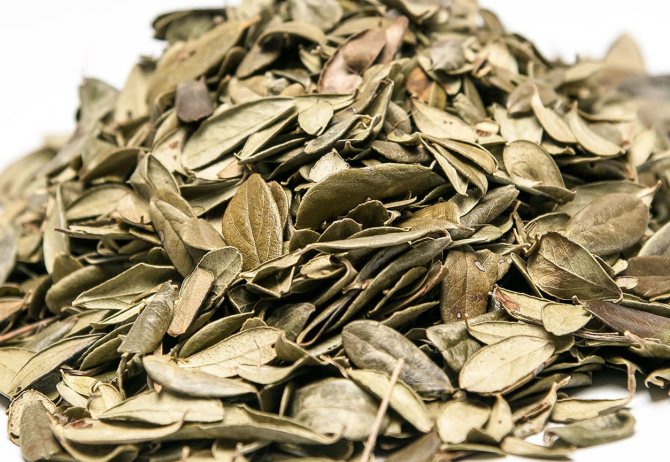

In what form, how best to use
Lingonberry leaves can be bought at any pharmacy in the form of dried raw materials or prepackaged tea bags.
You can prepare lingonberry yourself - this plant is harvested in an ordinary coniferous or mixed forest. Important:
- collect raw materials before or after the flowering of the plant - in April or September;
- when collecting, the leaves must be plucked carefully, without damaging their surface;
- dry the leaves in the shade in the open air or in a ventilated area;
- well dried raw materials should not darken.
From dry leaves, you can independently prepare medicines. Lingonberry is often consumed in the form of aqueous, rather than alcoholic, tinctures.
The maximum dosage for any dosage forms on water is 150-250 ml per day in several doses.
| Dosage form | How to cook | How to use |
| Decoction | Pour a spoonful of raw materials with a glass of boiling water, boil in a tightly sealed container for another half hour | 2 tbsp. l. 3 times a day |
| Infusion | Pour a spoonful of raw materials into a thermos, pour a glass of boiling water, leave for at least 4 hours | Half a glass twice a day |
| Alcohol tincture | Pour a handful of dry crushed leaves with vodka, half diluted with water, leave in the dark for 2 weeks | 30-40 drops three times a day before meals |
| Tea | Mix a spoonful of dry lingonberry with mint and lemongrass, boil with boiling water, you can add honey, lemon | 1-2 cups a day |
For the medicinal properties, benefits and possible dangers of lingonberry leaves, see the video:
Find out all about the health hazards and health benefits of cherries, how to eat them and the recommended daily amount in a separate article.
The essence and principles of the Minus 60 diet, results and reviews, photos of those who have lost weight - everything about it is here.
And about what cilantro is useful for the body, how to use it correctly, find out from here:
Antioxidant properties and contraindications in oncology
The next useful property of the lingonberry leaf is its ability in the composition of drugs to suppress the activity of free radicals in the body and prevent damage to cell membranes in various tissues. This action is due to the activity of flavonoids (including those included in the vitamin P complex), vitamin C, lycopene and zeaxanthin. The same substances are found in the leaves of a very famous bearberry plant - a close relative of lingonberry. You can distinguish their leaves by their appearance - lingonberry on the underside of the leaves has characteristic dark dots that ensure moisture absorption, while bearberry leaves do not have such formations.
The phot below shows the lingonberry leaves:


It is believed that due to these properties, tea, infusion or decoction of lingonberry leaves not only protects the body from the development of certain diseases, prevents the development of cosmetic defects (wrinkles, age spots) and reduces the severity of inflammatory processes, but also contributes to protecting the body from cancer.
At the same time, both for pure hydroquinone and for the lingonberry leaf preparations themselves, a possible carcinogenic activity has been shown. It has been confirmed by animal studies, but not yet proven in humans. Nevertheless, with oncology, it is impossible to drink lingonberry leaf preparations, as well as the risk of developing cancer is a contraindication for the use of these drugs.
Potential danger and how to avoid it
Let's talk about the negative side of lingonberry leaves. Despite the useful and medicinal properties, they have contraindications. Although lingonberry does not belong to the category of poisonous or dangerous plants, theoretically possible complications as a result of uncontrolled and prolonged use.
There are few absolute contraindications to taking it:
- individual intolerance;
- chronically low blood pressure;
- increased acidity of the stomach.
But for some categories of patients, the intake of lingonberry is not prohibited, but limited.


In childhood the use of phytopreparations inside is not recommended until 7 years in general and up to 12 years - for alcohol tincture. External use of lingonberry leaf in the form of rinses for the throat, compresses and lotions, solution for inhalation is possible from one year of age.
During pregnancy Lingonberry leaves are often used as an effective and harmless diuretic and decongestant. Doctors recommend that expectant mothers not get carried away with such teas: the maximum dose of decoction or lingonberry infusion in an "interesting position" is half a glass a day. It is forbidden to use it until 28 weeks of pregnancy, since theoretically this plant is capable of stimulating the contractile activity of the uterus, leading to an early miscarriage.
Hypertensive patients should not take lingonberry leaf continuously. A course of treatment is recommended for them: 2 weeks of admission alternate with 2 weeks of rest.
For ulcers, the use of this phytopreparation is recommended to be coordinated with the attending physician, since theoretically this can lead to blood thinning, provoke internal bleeding.
When to harvest lingonberry leaves
Harvested in early spring, starting in April until the plant blooms. Lingonberry leaves can be harvested in the fall after the fruit is ripe. Cut carefully together with aboveground shoots, spread in a room with air access, dry in a shady place or with a dryer, the temperature of which does not exceed forty degrees. The medicinal properties of lingonberry leaves persist for three years.
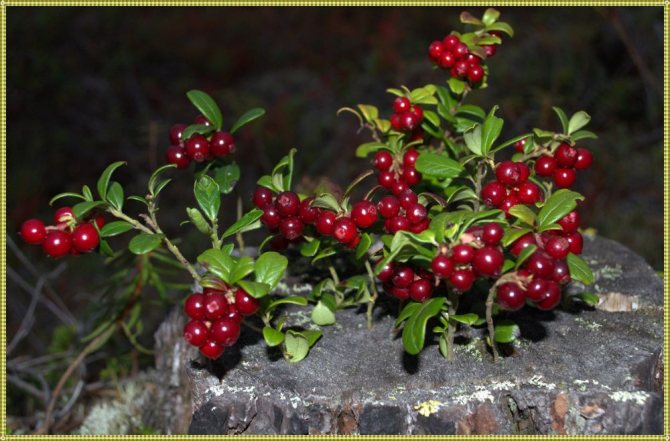

Other Uses for Lingonberry Greens
Lingonberry leaves are used not only in folk medicine, as an effective remedy for thousands of diseases, but also in other areas, for other purposes:
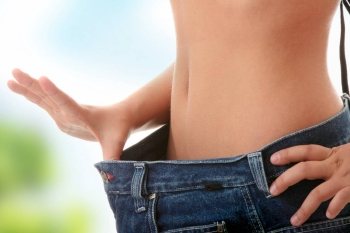

- Lingonberry leaves and weight loss. Due to its diuretic properties, lingonberry leaves are considered an effective weight loss aid. You should not abuse this plant to hone a slim figure - together with "excess" water, not unnecessary fat deposits are lost, but useful substances and electrolytes necessary for health. There is no need to equate lingonberries with instant weight loss products.
- Lingonberry in cosmetology... Decoctions and infusions based on lingonberry leaves can improve the appearance, make the skin younger, smoother, and the hair shiny and elastic.
The secret of "lingonberry" beauty lies in the regular use of herbal remedies: tonics, lotions, masks. You can add lingonberry infusion to ready-made factory-made creams and lotions, enriching them.
Lingonberry leaves have invaluable healing power, can alleviate the fate of patients with diseases of the kidneys, joints, endocrine pathologies.
This medicinal product is trusted by traditional medicine masters and doctors from official medical institutions. Therefore, an effective treatment regimen for lingonberry will help to develop a certified doctor, with whom it is necessary to consult.
The medicinal properties of lingonberry leaf tea
The medicinal properties of tea are based on chemical elements:
- Ascorbic acid supports immunity, helps the body fight viruses, restores the body's natural defenses. Drinking tea is necessary for the prevention of colds. During the period of respiratory infections, in the off-season, in frost, it is recommended to drink tea, 2 - 3 glasses a day. If you are sick, then the broth will help bring down the temperature. Tea has antipyretic effects due to its high vitamin C content.
- If a person has undergone a serious illness or operation, lingonberry broth will help restore strength and improve health. It should also be taken by women in the postpartum period.
- The tannin that is part of the leaf is a natural energetic. Due to it, lingonberry tea restores strength after training, hard work, with a general loss of strength.Nutritionists prescribe a decoction as a remedy for exiting diets.
- The leaf contains compounds that heal the intestinal tissue. Therefore, tea is recommended to be taken in case of disturbances in the digestive system. But, in acute forms of gastritis or ulcers, you can only drink leaf tea. The berry is contraindicated.
- In folk recipes, lingonberry tea should be drunk with food poisoning, stopping stomachs, diarrhea. Acids in the composition of the leaf normalize the microflora.
- When applied externally, an anti-inflammatory effect is noted. The drink fights skin fungus. The acidic environment on the skin eliminates traces of defects, promotes wound healing.
- Has a vasodilating effect. Useful for people with high blood pressure, with meteorological dependence. Expansion of blood vessels helps to improve blood circulation. Fatigue is relieved, symptoms of stress, nervousness disappear. The person becomes relaxed, sleep improves, the biological rhythm of the body is normalized.
- It is a natural diuretic. It removes excess fluid, restores the natural fluid balance in the body. This property is useful for people with kidney disease, bladder disease, cystitis and adenoma. For cosmetic purposes, it removes bags under the eyes.
- Acids block sugar in the body. Therefore, leaf tea reduces the total amount of sugar in the blood, stops insulin resistance. Recommended for diabetes mellitus and for its prevention. Reducing sugar can help you lose weight.
- During lactation, mothers can drink young lingonberry tea. Milk will increase the amount of vitamins, organic acids and fats. There is also an increase in the amount of milk.
The broth can be drunk for the prevention of cancer. But before using the drink, you need to consult a doctor.
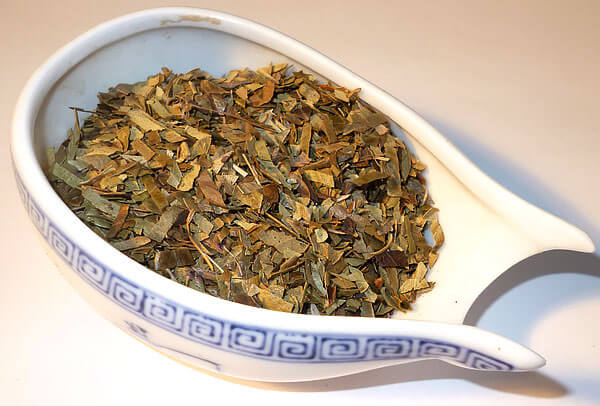

The benefits of lingonberry leaf for women
It is pleasant for women to know that one remedy can cure a number of female diseases and at the same time preserve the beauty of the skin. The leaves are used in cosmetology to cleanse the skin, giving it a natural color.
A bath of infused leaves oxidizes the skin microflora. The acidic environment promotes the healing of cuts, scratches. Age spots and traces of lichen also disappear. Due to the removal of excess fluid from the body, bags under the eyes, swelling disappear.
The drink contains vitamins and minerals that restore the body's metabolism. With a normal metabolism, excess weight is lost, you begin to feel lightness. Tea helps to remove toxins and toxins from the body, normalizes the functioning of the digestive system, kidneys and liver.
Diuretic effect and its harm during weight loss
Many people who lose weight believe that due to the diuretic effect of lingonberries will help them lose weight. The logic here is simple: losing fluid, the body also loses weight. As a result, many popular recipes for losing weight include the use of lingonberry leaf preparations.
In fact, this use of lingonberry leaves is a mistake that has nothing to do with medicinal use. When losing weight, it is very important to maintain the correct water balance in the body so that when fats are broken down in the urine, the largest amount of their decay products is excreted as efficiently as possible. If at the same time a significant amount of water is removed from the body, the utilization of fat breakdown products will slow down, which will worsen the condition of the losing weight.
It is much more rational, on the contrary, to "fill" the body with water so that the liquid is removed from it in natural quantities. Only in this case, weight loss will be as fast and effective as possible.
The very same loss of fluid by the body will give an insignificant effect - it will help to "lose" 1-2 kilograms, which will not affect the figure in any way, but can cause harm to the body.
Procurement of raw materials
Leaves are harvested in ecologically clean areas at a certain period of time - in early spring before buds appear or in autumn after harvest.
Collect shoots of dark green saturated color with a smooth, glossy surface, approximately the same size, the calendar age of which is not less than one year.
Raw materials are dried at a temperature of 50-60 degrees in a dryer or under sheds, protecting from sunlight.
Quality leaves, plucked on time, odorless, do not change color during the drying process.
The resulting raw materials are put into cardboard boxes or wooden boxes lined with paper.
Useful properties remain unchanged for up to 3 years if properly stored in a dry place. Lingonberry leaf is sold in a pressed form (braces), in crushed and in filter bags.
Remember that any herbal medicine should be started after consulting with specialists.
Application for diseases
Diseases in the treatment of which it is recommended to use funds based on dry lingonberry leaf:
- anacid gastritis;
- stones and sand in the kidneys;
- pyelonephritis;
- cystitis;
- hepatitis and cholecystitis;
- flu and colds;
- diabetes;
- rheumatism and arthritis;
- hypertensive problems and ischemic heart disease;
- uterine bleeding;
- internal bleeding;
- tuberculosis;
- jaundice;
- vitamin deficiency, scurvy and anemia;
- helminthiasis;
- neuroses, depressive states;
- urological diseases.
Lingonberry leaf description
Lingonberry in natural conditions prefers to grow in coniferous forests and dry peat bogs, often in the vicinity of blueberries, blueberries. But berry-growers are well adapted for life in the tundra, arctic zone, high mountains, mixed forests, along the edges of swamps. In the 60s of the XX century, cultivated lingonberry plantations began to be laid, where varietal plants with larger berries, but containing slightly less nutrients, were planted.
Important! Both cultivated and wild lingonberry are medicinal plants.
Small leathery leaves from 0.5 to 3 cm long, no more than 1.5 cm wide are arranged in regular order, on short petioles, densely dotted with flexible shoots. They are oval in shape, dense, tough, with curved edges, they are painted dark green, do not fall off in the fall, hibernate under the snow. Young leaves are lighter in color. The reverse side is pale, dotted with small black or dark brown pits, in which there are special cells that collect moisture.
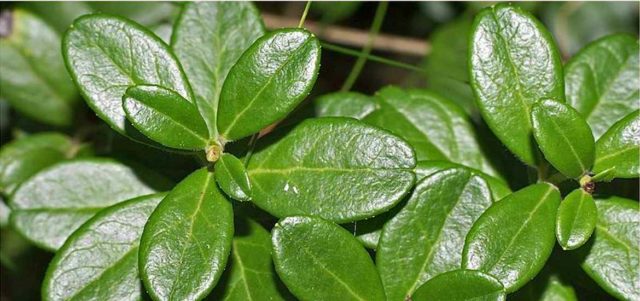

When the lingonberry leaf is harvested for treatment
Even among herbalists, certified biologists and herbalists, there is no consensus regarding the timing of the collection of lingonberry leaves. The only thing they agree on is that harvesting cannot be carried out during the flowering and fruiting of the culture.
Without going into details, lingonberry leaves are collected:
- Immediately after the snow melts.
- In the spring, before the buds appear (April - mid-May) or in the fall, after picking the berries.
In fact, lingonberry leaves have beneficial properties all year round. Only during flowering and fruiting are all the forces of the plant directed to the formation of ovaries. Lingonberry draws up resources for ripening berries, emptying the "pantries" of other vegetative organs. After all, fruiting for a plant is the same as procreation for animal organisms.


Sometimes it is advised to cut off the tops of the shoots, and then remove the leaves from them, but it should be remembered that lingonberry is not a herbaceous plant. Its branches grow back slowly. If you cut off the shoots completely, the berries in this place will not appear soon.
When collecting leaves for your own use, it is best to only pick them off. You should hold the shrub with your hand so as not to pull the whole plant out of the ground, because the root system is shallow. It is impossible to carry out a mass collection like that. In this case, it is better to trim the shoots selectively.
Comment! For the treatment of some female diseases, flowering shoots are used, but it is very difficult to dry them properly.
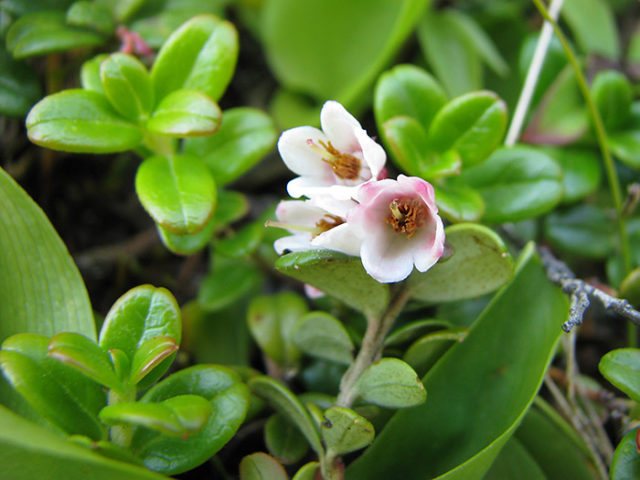

The collection of raw materials is carried out in sunny dry weather after the dew has dried. This should not be done near highways, airports, high-voltage lines, factories, and in areas contaminated with radiation and heavy metals. In order for the lingonberry leaf to heal, and not cripple, you should take it in an ecologically clean area.
How to dry a lingonberry leaf at home
In addition to the fact that the healing effect of lingonberry leaves collected during the flowering and fruiting period is much lower than that harvested in the autumn-spring period, it is almost impossible to dry them correctly. They will still turn black and lose all medicinal properties.
It is easiest to dry the leaves collected from the snow or spring. They are laid out in a thin layer in a warm, well-ventilated place, where the direct rays of the sun do not fall. During drying, the raw material must be turned over frequently.
Correctly dried lingonberry leaves retain their green color. They are stored in linen bags, cardboard boxes with holes or wooden boxes, the bottom of which is lined with paper. Lingonberry leaves lose their medicinal properties after 3 years.


Important! You need to collect only high-quality, healthy raw materials. The reddish, curled leaves are infected with fungus and should not be used.
On sale, especially in regions where lingonberry does not grow, shoots of an incomprehensible color collected in bunches are often found. You should think carefully before using them for treatment - they are clearly not dried correctly.
It is undesirable to use an oven to prepare medicinal raw materials - even if you set the lowest temperature, the loss of nutrients will be great. Special dryers are much better, but still it is better to give the lingonberry leaves time to wilt and dry naturally.
Important! The temperature at which raw materials are dried must not exceed 40⁰ С.


Biochemical composition
The healing properties of dry lingonberry leaves are not inferior in effectiveness to some medications. This is easy to explain if you look at their unique biochemical structure.
Lingonberry leaves contain:
- tannins (tannins), phytoncides and flavonoids;
- phenolic glycosides (arbutin and hyperoside);
- free hydroquinone;
- organic acids (ursular, citric, cinchona, acetic, gallic and ellagic);
- minerals (potassium, phosphorus, calcium, manganese, iron, etc.);
- antioxidant lycopene;
- vitamins: A, C, B1, B3, B6, B9, E.
It is not for nothing that the leaf is recommended to be introduced into herbal teas or consumed in pure form in the form of decoctions to normalize metabolic processes in the body.



